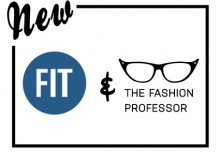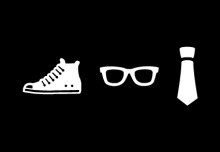Tips on Fashion Portfolios
Creating a student portfolio for the purpose of getting into a Fashion Design Program at a college or university is a very different process from creating a professional portfolio when you are looking to land a fashion job. Below are some things to think about when you are creating a portfolio for either of these scenarios.
For Aspiring Fashion Students:
If you are an aspiring fashion student then you need to consider each school you are interested in applying to a read that school’s specific portfolio requirements. Some school’s don’t require that you have anything fashion-related in your portfolio. They may want to see some general examples of your artwork (painting, sculpture, mixed media works etc.) that you have created while you were in high school or other design programs.
Other schools may want to see fashion sketches and see if you can design garments as a collection. You may also be required to show that you have some sort of sewing experience with photos of garments that you have constructed.
In addition, you may also need to complete a special project for your portfolio. Each school is different and the requirements are very specific so make sure you give yourself plenty of time to review the requirements well in advance of the deadline as you will most likely have to create several portfolios.
Here are examples of the portfolio requirements for the Fashion Institute of Technology and Parsons, both located in New York City.
- https://www.fitnyc.edu/admissions/apply/portfolio/fashion-design-aas.php
- https://parsons.slideroom.com/#/login/program/32565
For Aspiring Fashion Professionals:
Whether you are looking to land a job as a Fashion Designer, Design Assistant or even a Design Intern you will most likely need a portfolio to show off all your great skills. Many designers create collections or mini collections in their portfolio which will showcase a range of their skills.
For example, its is common to include Mood Boards with colors, fabric and inspiration images that you used to create your collection. Creating a collection shows that you know how to design pieces that work together and that tell a complete story. You can even show your process and how you arrived at that final collection. Maybe you want to show your initial thumbnail sketches or a glimpse into your sketchbook.
When showing your designs you should have a combination of both hand illustrations and also computer illustrations to show your range. Its always great that you can sketch by hand but depending on the type of company you are applying to they may not even care about your hand illustrations and focus more on your ability to create great computer garment flats like the ones you can create in Adobe Illustrator. Since using Illustrator is such a huge part of a designer’s daily duties, companies want to make sure you understand this computer program to carry out your job.
Show off your Technical Skills:
While you may be applying to a design job, many companies want to see that you are well versed in garment construction and product development, so in addition to your collections you should also include garment techpacks in your portfolio.
Your design skills are very important but so is your ability to create a techpack which will help your factory bring your garment to life. Not sure what a techpack is? Read this post: https://www.thefashionprofessor.com/what-is-a-techpack/
Do Technical Designers need portfolios?
When applying for a technical design position you definitely need to show that you can create great, well-organized and thorough techpacks that make factory communication as seamless as possible. Of course it is standard that these techpacks are created digitally with computer draw garment flats. Several garment techpack examples with diagrams and measurements is a good place to start if you are a technical designer seeking a job.
Digital Portfolio vs Printed Portfolio:
Having a digital version of your portfolio (like a PDF) is an easy and affordable way to showcase your talents. A digital version allows you to easily send your portfolio as an attachment (just make sure you are not sending huge attachments over email) to companies you are applying to.
You can also have an online version which will allow you to send a link to a potential employer to view your portfolio online. Here are 2 sites to create an online portfolio:
As another option, you can create your own website.
Final Tips
Show your best work! You will have a limited amount of time to get someone’s attention so editing your portfolio carefully is so important. Also remember your professional portfolio is always a work in progress. As you grow as a designer, so does your portfolio. Try to always keep your portfolio up to date to reflect your best work.
Obviously your portfolio is super important but don’t forget to spend time sprucing up your resume. Here are some tips from the Fashion Recruiting company JBC Style: http://jbcstyle.com/preparing-the-best-resume-around/



